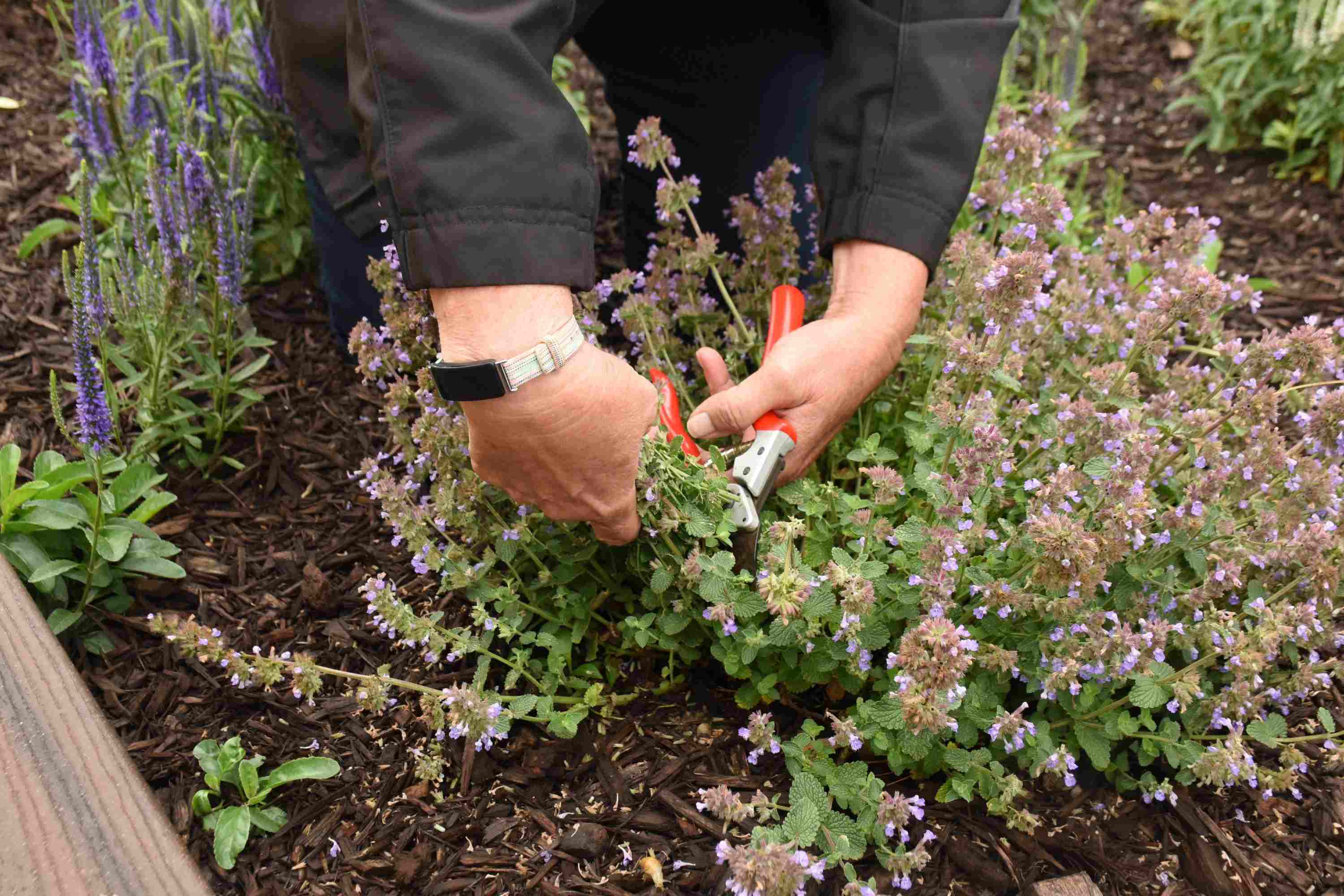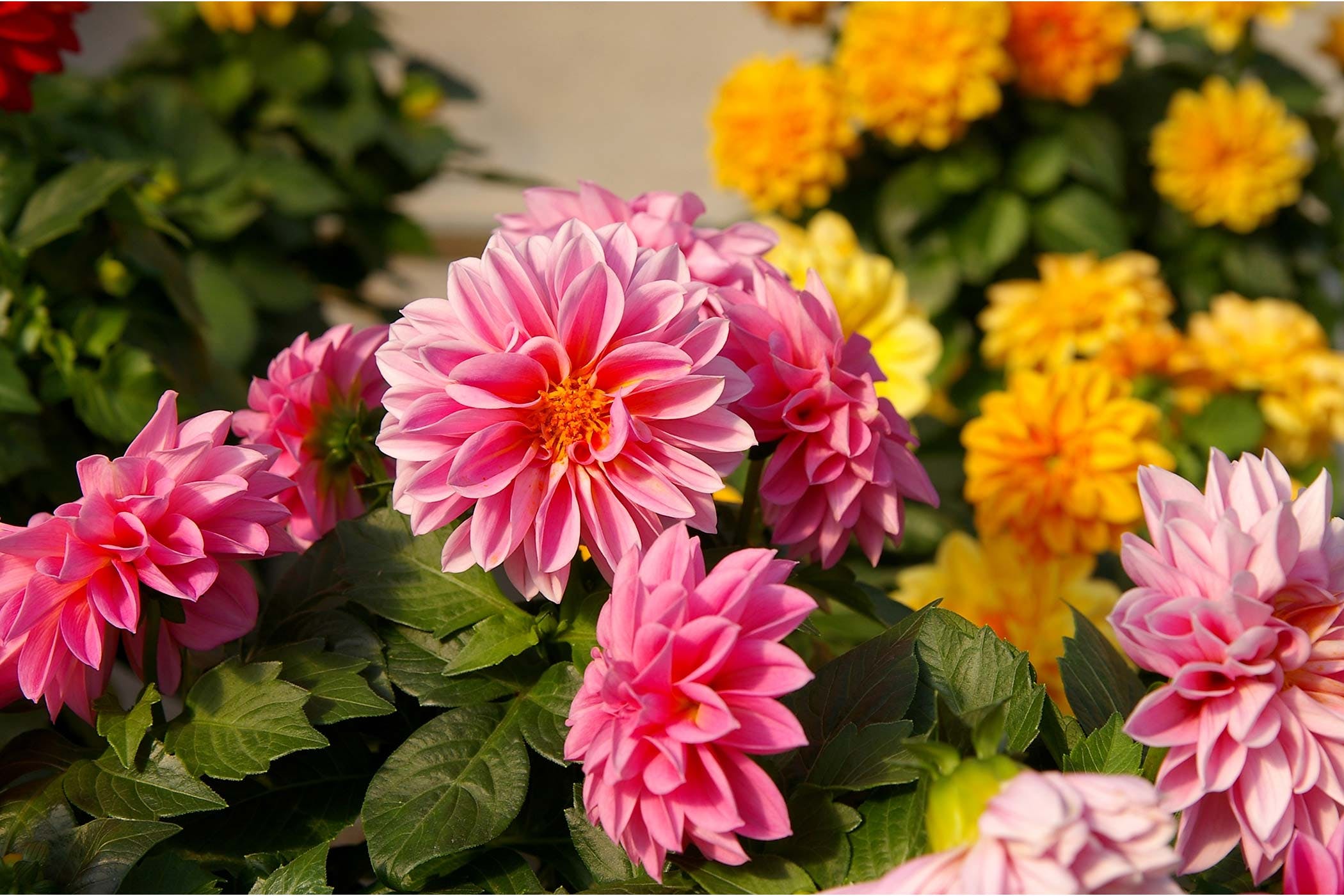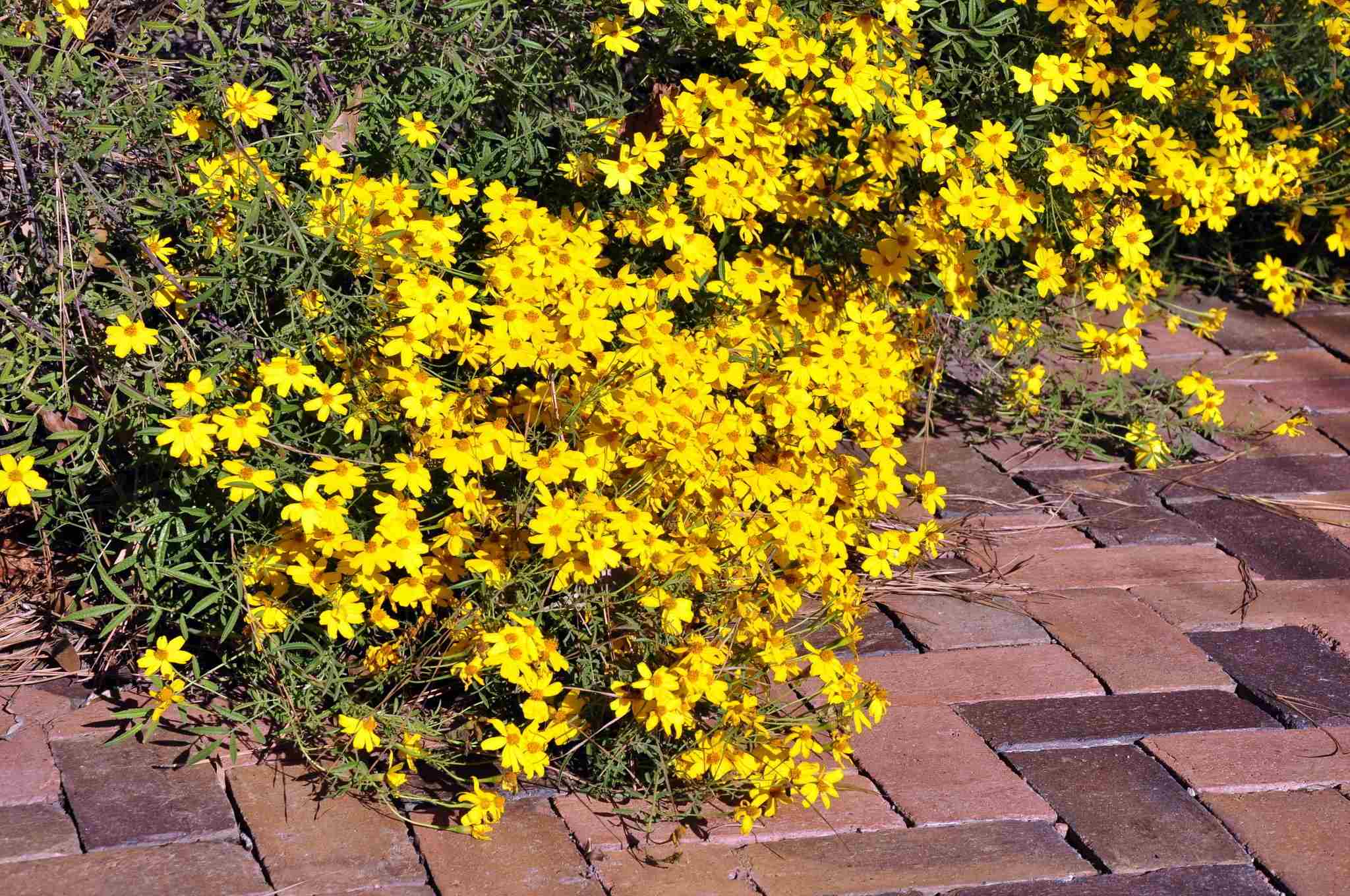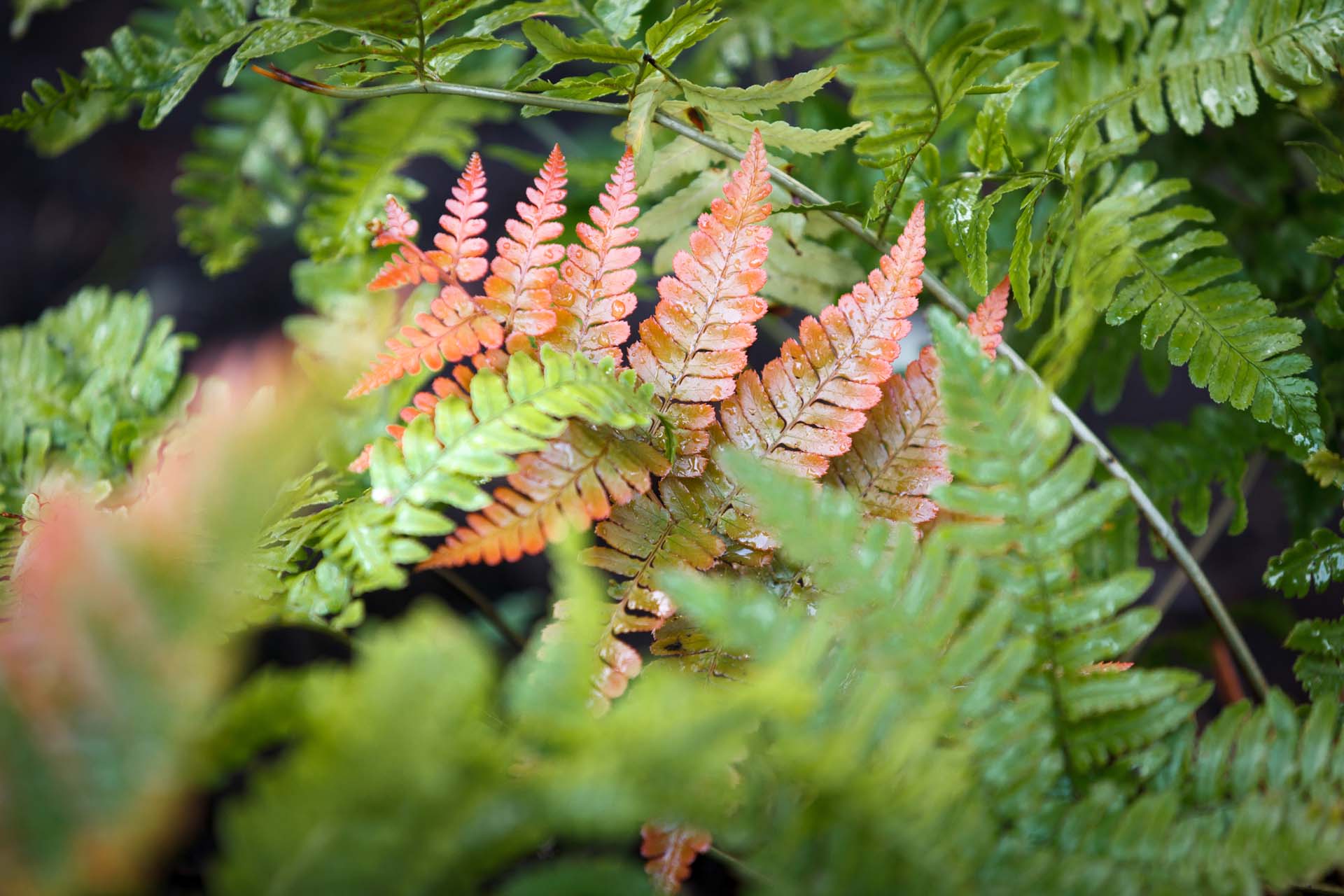Home>Gardening Techniques>Plant Care>Which Mums Are Perennials


Plant Care
Which Mums Are Perennials
Modified: February 6, 2024
Discover which mums are perennials and get expert tips on plant care to keep them thriving year after year. Enhance your garden with these beautiful and long-lasting flowers.
(Many of the links in this article redirect to a specific reviewed product. Your purchase of these products through affiliate links helps to generate commission for Chicagolandgardening.com, at no extra cost. Learn more)
Table of Contents
Introduction
Moms play an essential role in our lives, constantly juggling multiple responsibilities and finding ways to create a nurturing and beautiful environment for their families. One way to enhance the aesthetic appeal of any home is by incorporating perennial plants into the garden. Perennial plants, known for their longevity and ability to bloom year after year, are not only a sustainable choice but also an excellent investment in creating a vibrant and picturesque landscape for mothers to enjoy.
Perennial plants bring many benefits to mothers who appreciate the beauty and serenity of nature. These plants require less maintenance compared to annuals, allowing busy moms to enjoy a stunning garden without the need for constant replanting. Additionally, perennial plants often attract pollinators like butterflies and bees, creating a harmonious environment that can be both relaxing and educational for mothers and their children.
In this article, we will explore the world of perennial plants and the reasons why they are an ideal choice for mothers looking to add a touch of nature to their homes. We will also discuss popular perennial plants that are favored by moms for their beauty and ease of care. Furthermore, we will provide valuable insights into selecting the right perennial plants for your garden and offer useful tips on how to successfully maintain these plants throughout the seasons.
So, if you’re a mom seeking to create a lively and vibrant garden that will bring joy and tranquility to your surroundings, read on to discover the wonders of perennial plants and the secrets to nurturing them to their full potential.
Definition of Perennial Plants
Before delving into the world of perennial plants, it’s important to understand what exactly makes a plant a perennial. Unlike annual plants that complete their life cycle in one growing season, perennials have the remarkable ability to survive and thrive for multiple years, returning year after year with new growth and blossoms.
Perennial plants have adapted to survive cold winters, droughts, and other environmental challenges, making them a resilient choice for any garden. Their root systems remain alive and dormant during unfavorable conditions, only to reawaken when the conditions become more favorable for growth. This dormancy helps perennials conserve energy and ensure their long-term survival.
Perennials come in various shapes, sizes, and colors, offering a wide range of choices for mothers to create their own unique garden style. From vibrant flowering perennials like roses, daisies, and lilies, to foliage-focused perennials such as hostas and ornamental grasses, there is a perennial plant to suit every personal preference and gardening aesthetic.
Furthermore, perennials are often categorized into three main groups based on their lifespan and growth habits:
- Herbaceous Perennials: These are non-woody plants that die back to the ground during the dormant season and regrow from their base in the following growing season. Common examples include black-eyed Susans, coneflowers, and peonies.
- Woody Perennials: These perennials have woody stems and retain their structure throughout the year. They may lose their leaves during the dormant season but will regrow foliage in the following season. Popular woody perennials include roses, hydrangeas, and lavender.
- Evergreen Perennials: These perennials maintain their foliage throughout the year, providing year-round greenery and interest in the garden. Examples include holly, yucca, and ornamental grasses.
Now that we have a clear understanding of what perennial plants are and the different types available, let’s delve deeper into why they are an excellent choice for mothers looking to enhance their outdoor space.
Benefits of Perennial Plants for Mothers
Perennial plants offer numerous advantages that make them particularly appealing to mothers who are passionate about gardening and creating a beautiful outdoor space. Let’s explore some of the key benefits:
1. Low Maintenance: One of the biggest advantages of perennial plants is their low maintenance nature. Unlike annuals that require replanting every year, perennials come back year after year, saving time and effort for busy moms. Once established, they require minimal care, making them an ideal choice for those with limited time or gardening experience.
2. Cost-Effective: Investing in perennial plants can be a cost-effective choice in the long run. While the initial investment may be higher than buying annuals, perennials last for multiple years, eliminating the need for yearly replacements. This not only saves money but also reduces the time and energy spent on purchasing and planting new flowers each season.
3. Environmental Sustainability: Perennials are environmentally friendly due to their long lifespan and ability to minimize waste. By choosing perennials, mothers can contribute to a greener environment by reducing the use of plastic pots, fertilizers, and other resources associated with replanting annuals. Additionally, perennials provide habitat and food sources for beneficial insects, birds, and other wildlife, supporting a healthy ecosystem in your garden.
4. Year-round Beauty: Perennial plants offer an ever-changing display of beauty throughout the year. From the first signs of spring blooms to the vibrant colors of summer and the textured foliage of fall, perennials provide a continuous source of visual delight. Mothers can enjoy the beauty of their gardens and share moments of tranquility with their loved ones in an enchanting outdoor oasis.
5. Educational Opportunities: Perennial gardens provide excellent educational opportunities for mothers and their children. Kids can learn about plant life cycles, growth habits, and the importance of pollinators as they observe the changes and interactions within the garden. It’s a hands-on way to foster a love for nature and conservation while spending quality time together.
6. Stress Relief and Well-being: Spending time in a garden filled with perennial plants can have a positive impact on mental and emotional well-being. Gardening has been proven to reduce stress, improve mood, and promote relaxation. For mothers, nurturing their perennial plants can serve as a form of self-care and provide a peaceful sanctuary to unwind from the demands of daily life.
With these compelling benefits in mind, it’s easy to see why perennial plants are a perfect fit for mothers who want to create a beautiful and sustainable outdoor space for their families to enjoy.
Popular Perennial Plants for Mothers
When it comes to choosing the perfect perennial plants for their gardens, mothers have an abundance of options to consider. Here are some popular perennial plants that are beloved by mothers for their beauty, ease of care, and versatility:
1. Roses: Known for their timeless beauty, roses are a classic choice for mothers who appreciate elegance and fragrance in their garden. With countless varieties available, you can find roses in a wide range of colors and forms, from climbing roses to compact shrubs.
2. Black-eyed Susans: With bright yellow blooms and dark centers, black-eyed Susans bring a cheerful and vibrant touch to any garden. They are easy to grow and attract butterflies, making them a favorite among mothers who want to create a haven for pollinators.
3. Geraniums: Geraniums are popular perennials that come in a variety of colors, including pink, purple, and white. They are known for their long flowering period, low maintenance requirements, and ability to thrive in various growing conditions, making them an excellent choice for busy moms.
4. Daylilies: Daylilies are prized for their stunning blooms, which last for a single day but are produced in abundance throughout the summer. These perennials come in a wide range of colors and patterns and are known for their adaptability and hardiness.
5. Lavender: Lavender is a perennial herb renowned for its fragrant flowers and calming properties. It thrives in well-draining soil and full sun, making it a perfect choice for sunny areas in the garden. Lavender’s aromatic blooms and foliage create a serene atmosphere that mothers can enjoy.
6. Hostas: Hostas are shade-loving perennials with attractive foliage that comes in a variety of colors and textures. They are ideal for adding visual interest to shady areas of the garden and require minimal care once established.
7. Coneflowers: Coneflowers, also known as Echinacea, are native perennials that feature vibrant daisy-like flowers with distinctive raised centers. They are drought-tolerant, attract pollinators, and add a pop of color to summer gardens.
8. Peonies: Peonies are cherished for their large, showy blooms and intoxicating fragrance. These long-lived perennials are available in a range of colors and varieties and make exquisite cut flowers for bouquets.
These are just a few examples of popular perennial plants that mothers adore. When selecting perennials for your garden, consider factors such as sun exposure, soil conditions, and personal preference to ensure the plants thrive and bring joy to your outdoor space.
Factors to Consider When Choosing Perennial Plants
Choosing the right perennial plants for your garden requires thoughtful consideration. By taking certain factors into account, you can ensure that the plants you select will thrive in your specific growing conditions and meet your aesthetic preferences. Here are some key factors to consider when choosing perennial plants:
1. Light Requirements: Different perennial plants have varying light requirements, and it’s important to match the plants to the available sunlight in your garden. Some plants thrive in full sun, while others prefer partial shade or full shade. Assess the amount of sunlight your garden receives throughout the day to determine the appropriate plants for each area.
2. Soil Type and Drainage: Understanding the soil type in your garden is crucial for selecting perennials that can thrive in those conditions. Some plants prefer well-draining soil, while others tolerate clay or sandy soil. Additionally, consider the moisture levels and drainage capacity of your soil to choose plants that can withstand your local climate.
3. Climate and Hardiness: Consider the climate in your region and choose perennials that are hardy enough to withstand the temperatures and weather patterns. Selecting plants that are suited to your hardiness zone will increase their chances of survival and long-term success in your garden.
4. Watering Needs: Determine the watering needs of the perennial plants you are considering. Some plants prefer consistently moist soil, while others are more drought-tolerant. Assess your ability to provide the required water levels and choose plants that align with your watering capabilities.
5. Growth Habit and Size: Consider the growth habit and size of the perennial plants to ensure they fit well in your garden space. Some plants have spreading habits, while others grow in clumps or tall spikes. Take into account the mature height and spread of the plants to avoid overcrowding or blocking other plants in your garden.
6. Bloom Time and Duration: Think about the desired bloom time and duration of the perennials you want to include in your garden. Choose plants with complementary bloom times to ensure a continuous display of color throughout the seasons. This will provide you and your family with ongoing visual interest and enjoyment in your garden.
7. Maintenance and Care: Consider the level of maintenance and care required by the perennial plants you are interested in. Some plants may require regular pruning, deadheading, or dividing, while others are low-maintenance and require minimal intervention. Assess the amount of time and effort you can dedicate to garden maintenance to choose plants that align with your gardening style.
By taking these factors into account, you can make informed decisions when selecting perennial plants for your garden. Carefully chosen plants that are well-suited to your growing conditions will flourish and provide a beautiful and sustainable landscape for you to enjoy.
How to Care for Perennial Plants
Caring for perennial plants is relatively straightforward, and by following a few basic guidelines, you can ensure that your plants thrive and flourish for years to come. Here are some essential care tips for perennial plants:
1. Watering: Provide your perennials with regular and consistent watering. Keep the soil moist but avoid overwatering, as this can lead to root rot. The frequency of watering will depend on the specific plant and your climate, so monitor the moisture levels and adjust accordingly.
2. Mulching: Apply a layer of organic mulch around the base of your perennial plants. Mulching helps reduce weed growth, retain moisture in the soil, and regulate soil temperature. Use materials like wood chips or straw and replenish the mulch as needed.
3. Fertilizing: Feed your perennials with a slow-release, balanced fertilizer in early spring. This will provide them with the necessary nutrients for healthy growth. Be cautious not to over-fertilize, as excessive nutrients can lead to weak, leggy growth and reduced flowering.
4. Deadheading: Remove spent flowers by deadheading to encourage continuous blooming and prevent the plant from diverting energy into seed production. This practice also improves the overall appearance of the plant and can prolong the flowering season.
5. Pruning: Prune your perennial plants as needed to maintain their shape, remove dead or damaged branches, and promote better airflow and sunlight penetration. Pruning should be done after flowering or during the dormant season, depending on the specific plant’s requirements.
6. Division: Some perennial plants benefit from division every few years to prevent overcrowding and rejuvenate growth. Dividing can be done in early spring or late summer, depending on the plant. Carefully lift the plant, divide the root ball into smaller sections, and replant them in well-prepared soil.
7. Winter Protection: Provide winter protection for your perennials in colder regions to ensure their survival. Apply a layer of mulch or use protective covers to shield the plants from extreme cold temperatures and temperature fluctuations.
8. Pest and Disease Management: Monitor your perennial plants for any signs of pests or diseases. Early detection and intervention will help mitigate the damage. Consider organic pest control methods and practice good garden hygiene to prevent the spread of diseases.
By following these care guidelines, you can provide your perennial plants with the necessary conditions to thrive and create a stunning and healthy garden that brings joy to you and your family.
Tips for Creating a Perennial Garden
Creating a perennial garden is an exciting and rewarding endeavor that allows you to enjoy the beauty of flowering plants year after year. Whether you’re starting from scratch or revamping an existing garden, here are some helpful tips to consider:
1. Plan and Design: Before getting started, take some time to plan and design your perennial garden. Consider the size and shape of the area, as well as the desired layout and color scheme. Keep in mind the growth habits and height of the plants to ensure they are placed appropriately for visual appeal.
2. Research and Select Plants: Research different perennial plant options and determine which ones will thrive in your specific growing conditions. Consider factors such as sunlight, soil type, and moisture levels. Choose a mix of plants with varying bloom times to ensure continuous color throughout the seasons.
3. Start with a Few Key Plants: If you’re new to gardening or have limited space, it’s best to start with just a few key perennial plants. Focus on those that are easy to grow and require minimal maintenance. As you gain experience and confidence, you can gradually expand your collection.
4. Incorporate Native Plants: Consider adding native perennial plants to your garden. Native plants are well-adapted to the local climate, often require less water and maintenance, and provide important habitat and food for local wildlife.
5. Group Plants with Similar Needs: Grouping plants with similar sunlight, water, and soil requirements together will make maintenance easier and ensure that all plants in the same group thrive under similar conditions. This will also create a visually cohesive garden design.
6. Create Layers: Add visual interest and depth to your perennial garden by incorporating plants of varying heights and textures. Plant taller perennials at the back or center and shorter ones towards the front. Interplanting with flowering annuals or ornamental grasses can also add dynamic style to the garden.
7. Add Hardscape Elements: Enhance your perennial garden with hardscape elements such as pathways, arbors, or decorative containers. These features can provide structure and visual appeal to the garden, creating a welcoming and inviting atmosphere.
8. Consider Seasonal Interest: Select perennial plants that offer interest beyond their blooms. Look for varieties with attractive foliage, interesting seed heads, or colorful fall foliage. This will ensure that your garden remains visually appealing even when flowers are not in bloom.
9. Regular Maintenance: Maintain your perennial garden by regularly weeding, deadheading spent blooms, and monitoring for pests and diseases. Prune as needed and provide appropriate support for taller plants to prevent flopping.
10. Enjoy the Journey: Creating a perennial garden is an ongoing process, and it’s important to enjoy the journey. Experiment with different plant combinations, be patient as plants establish and grow, and take time to appreciate the beauty and tranquility of your garden.
By following these tips, you can create a stunning perennial garden that brings joy, serenity, and year-round beauty to your outdoor space.
Common Mistakes to Avoid when Growing Perennials
While growing perennial plants can be a relatively easy and rewarding experience, there are some common mistakes that gardeners should avoid. By being aware of these pitfalls, you can ensure the success of your perennial garden. Here are some common mistakes to avoid:
1. Neglecting Soil Preparation: Failing to properly prepare the soil before planting is a common mistake. Perennials thrive in well-draining soil enriched with organic matter. Take the time to amend the soil with compost or other organic materials to create a fertile and favorable growing environment.
2. Overcrowding: It can be tempting to fill your garden with as many plants as possible, but overcrowding is a common mistake that can lead to stunted growth and increased risk of disease. Space plants according to their mature size, allowing room for proper airflow and reducing competition for nutrients.
3. Ignoring Sunlight Requirements: Sunlight is crucial for the growth and flowering of many perennial plants. Planting sun-loving perennials in shady areas or shade-loving perennials in full sun will result in poor performance and disappointing blooms. Make sure to match the sunlight requirements of your plants to the available sunlight in your garden.
4. Inadequate Watering: Providing an appropriate amount of water is essential for the health and growth of perennials. While some perennials are drought-tolerant, most require regular watering, especially during dry spells. Avoid overwatering as well, as it can lead to root rot and other issues.
5. Lack of Mulch: The importance of mulching cannot be overstated. Mulch helps conserve moisture, suppress weeds, and regulate soil temperature. Neglecting to apply a layer of mulch around your perennial plants can result in water loss, weed competition, and soil erosion.
6. Failure to Deadhead: Deadheading, the process of removing spent flowers, is crucial to promote prolonged blooming. Failing to deadhead can inhibit the production of new blooms and divert energy into seed production. Regular deadheading encourages continuous flowering and keeps the garden looking tidy.
7. Forgetting about Fertilizing: Perennial plants benefit from regular feeding to maintain their vigor and encourage healthy growth. However, over-fertilizing or applying the wrong type of fertilizer can lead to excessive foliage growth at the expense of blooms. Follow the recommended fertilizer instructions or consult with a local garden center for guidance.
8. Neglecting Pest and Disease Control: Pests and diseases can wreak havoc on perennial plants if left unchecked. Regularly inspect your plants for signs of pests or diseases and take appropriate action. Implementing organic pest control methods and practicing good garden hygiene can help prevent infestations and disease outbreaks.
9. Lack of Diversity: Planting only a few varieties of perennials can limit the visual interest and diversity in your garden. Strive to include a mix of different colors, heights, textures, and bloom times to create a dynamic and visually appealing landscape.
10. Not Adapting to Local Conditions: Selecting perennial plants that are not well-suited to your local climate and growing conditions is a common mistake. Choose plants that are hardy in your region and can withstand the extremes of temperature and weather patterns.
By avoiding these common mistakes and practicing good gardening practices, you can ensure the health, vitality, and long-term success of your perennial garden.
Conclusion
Creating a perennial garden is a wonderful way for mothers to bring beauty, sustainability, and tranquility to their outdoor space. Perennial plants offer numerous benefits, including low maintenance, cost-effectiveness, and year-round beauty. By carefully selecting the right plants for your garden, considering factors such as light requirements, soil type, and climate, you can ensure the success of your perennial garden.
Remember to provide proper care for your perennial plants, including regular watering, mulching, and appropriate pruning and fertilizing. Avoid common mistakes like overcrowding, neglecting soil preparation, and ignoring sunlight requirements. Instead, create a well-balanced garden by incorporating diverse plants with varying heights, colors, and textures, enhancing the visual appeal and overall aesthetic of your garden.
As you embark on your journey of perennial gardening, take time to enjoy the process and appreciate the beauty that unfolds in your garden. Whether you’re tending to your plants, watching pollinators visit, or simply sitting back and relaxing in your garden oasis, the rewards of a perennial garden for mothers are endless. Embrace the therapeutic benefits of gardening, share the joy with your loved ones, and create lasting memories in your perennial paradise.
So, unleash your creativity, get your hands dirty, and start transforming your outdoor space into a haven of perennial beauty where you can reconnect with nature and find solace in its ever-changing cycles.










